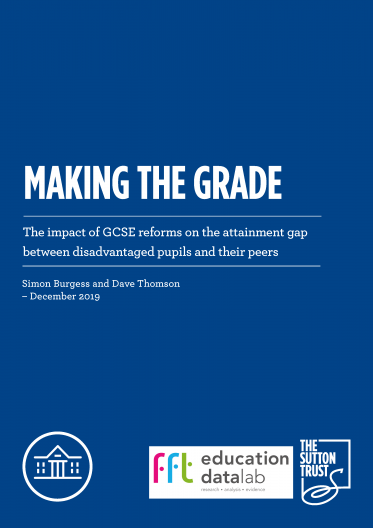Report Overview
Reforms to GCSEs were introduced in 2015. The major changes were a move from modules to a focus on final exams, and a change in the grading system from letters (A*, A…G etc), to numbers (9, 8…1 etc). The aims of the reforms were to improve standards overall by making courses harder and increase differentiation at the top of the grade range.
This research by Simon Burgess, Professor of Economics at the University of Bristol and Dave Thomson, chief statistician at FFT Education Datalab, examines the impact these reforms have had. The report analyses GCSE data before and after the reforms were implemented to explore the impact on disadvantaged pupils and the attainment gap.
